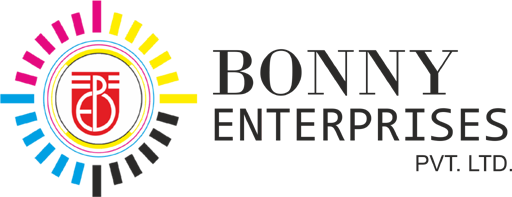Prepress
The Pre Press division at Concord Enterprise is where we begin our process with color enhancement of images, digital editing and file conversions from RGB to CMYK.
Technology
-
- Computer To Plate technology (CTP) eliminates the use of positives resulting in better resolution
- Proofreading traditionally means reading a proof copy of a text in order to detect and correct any errors. Modern proofreading often requires reading copy at earlier stages as well.
- Screening and adjustment of a continuous tone of images such as photographs
- Imposition, or the combination of many pages into a single signature form.
- Separation, or specifying images or text to be put on plates applying individual printing media (inks, varnishes, etc.) to a common print.
Press
The Press is known as the core to all the creative jobs. It is here the State-of-art comes to its perfection. The minutes of adjustments to be made are done here at the press.
Technology
- Welcome to the Press Technology & Mfg., Inc web site. PT&M is an industry leader in manufacturing durable, cost-effective dewatering equipment. We feel confident that in a thorough comparison of alternatives, the quality and value of PT&M’s equipment will be apparent. Our goal is to maintain 100% customer satisfaction resulting in unequaled service and support.
- Press Technology was founded in 1992 by industry design expert Mr. George Berner P.E. who offers more than 40 years of experience in engineering, manufacturing and product development. His credits include the design and development of screw presses for several leading manufacturers of pulp & paper equipment.
- This web site provides information on Screw Presses, Internal Drum Thickeners and other equipment and services offered by PT&M. We have also included many photographs of equipment manufactured by PT&M in the Picture Gallery.
- Contact us regarding questions, more information, sample testing, or to schedule an equipment demonstration or consultation at your facility.
Postpress
A crucial part of any Print Production, this is where we are able to put the finishing touches to the artwork. Moreover, handling most of the post press jobs in -house reduces errors and saves considerable time, enabling us to meet delivery deadlines on a pan India basis.
Technology
- Control on Registration which enables us to get proper sharpness and detail in the job
- The computerized console does the pre-calculation of the amount of ink required on each part of the sheet, while making the plates. The information generated by the computer is then used to automatically set up the ink-keys before printing
- This technology allows faster and more accurate color matching. Further, wastage is also dramatically reduced

Impacting
Enterprise infrastructure teams are under massive pressure as the cloud continues to upend traditional IT architectures and ways of providing service to the business. Companies are on a quest to reap the speed and agility benefits of cloud and automation, and infrastructure pros must keep up.In this rapidly changing IT environment, new technologies are challenging the status quo. Traditional gear such as dedicated servers, storage arrays, and network hardware still have their place, but companies are increasingly looking to the cloud, automation, and software-defined technologies to pursue their digital initiatives.According to IDC, by 2020, the heavy workload demands of next-generation applications and IT architectures will have forced 55% of enterprises to modernize their data center assets by updating their existing facilities or deploying new facilities.Moreover, by the end of next year, the need for better agility and manageability will lead companies focused on digital transformation to migrate more than 50% of their IT infrastructure in their data center and edge locations to a software-defined model, IDC predicts.
Works
A printing press is a complex piece of high-precision industrial equipment that is designed to produce printed material at a high rate of speed and low cost per page. Printing presses are commercially available which use several different types of printing technologies, but the most common type is called offset lithography. These presses are commonly designed in either sheet-fed configurations, which print on individual sheets of paper or other material, or web-fed configurations, which print on long webs of paper or other material, supplied on large reels. A so-called ‘full size’ sheet fed offset press prints on sheets that are about 700 mm x 1000 mm in size (about 28 inches x 40 inches). “Half size” and “quarter size” offset presses are also common, and these machines print on sheets which are one-half or one-quarter as large.







 WhatsApp us
WhatsApp us